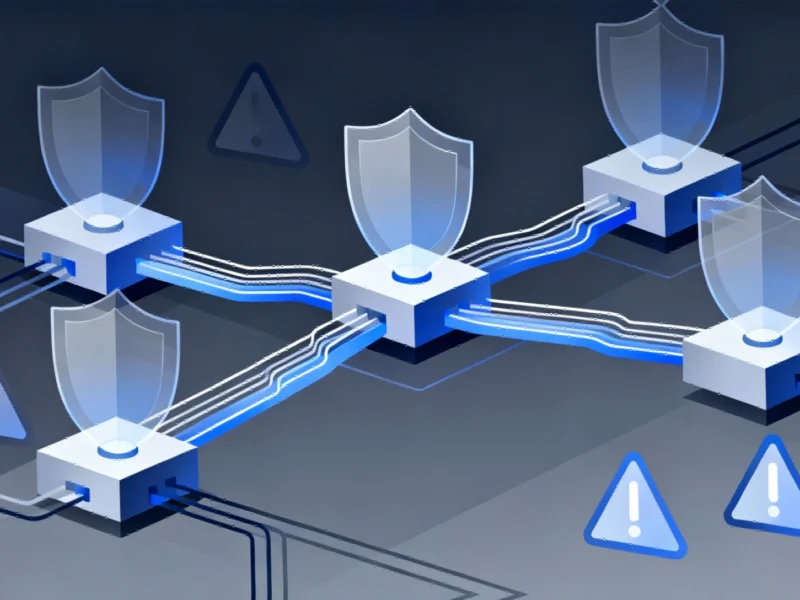Global Cybersecurity Authorities Unite on Operational Technology Protection Framework
In a significant multinational collaboration, the Cybersecurity and Infrastructure Security Agency (CISA) has partnered with the FBI, UK’s National Cyber Security Centre, and international counterparts to release comprehensive guidance for securing operational technology systems. This initiative represents a coordinated global effort to address growing cyber threats targeting critical infrastructure. The guidance builds upon previous recommendations while introducing new frameworks for organizational protection, as detailed in this comprehensive analysis of international cybersecurity developments.
Building Definitive OT Architecture Visibility
The newly released document, “Creating and Maintaining a Definitive View of Your Operational Technology (OT) Architecture,” provides organizations with practical methodologies for establishing complete visibility into their industrial control systems. This guidance expands on the recent “Foundations for OT Cybersecurity: Asset Inventory Guidance for Owners and Operators” by demonstrating how to leverage multiple data sources, including comprehensive asset inventories and manufacturer-provided resources like software bill of materials.
Organizations can utilize these frameworks to develop and maintain accurate, current views of their OT environments, enabling more effective risk management and security implementation. This approach mirrors the strategic thinking seen in other sectors, such as the strategic diversification approaches employed by automotive parts manufacturers facing similar operational challenges.
Comprehensive Risk Management Framework
A definitive OT record enables organizations to conduct more thorough risk assessments, prioritize critical and exposed systems, and implement appropriate security controls. The guidance emphasizes that maintaining accurate system visibility is fundamental to protecting industrial environments from evolving cyber threats.
The framework addresses three critical areas that have become increasingly important as organizations digitize their operations:
- Third-party risk management – Establishing protocols for vendor and supplier security assessments
- OT information security – Protecting sensitive operational data and intellectual property
- Architectural control design – Implementing robust security controls within system architecture
Cross-Functional Collaboration and Standards Alignment
Key recommendations within the guidance emphasize the importance of collaborative approaches across organizational teams, particularly fostering coordination between OT and IT departments. This interdisciplinary cooperation is essential for implementing effective cybersecurity measures that span traditional organizational silos.
The guidance also stresses alignment with established international standards, including IEC 62443 for industrial automation and control systems security and ISO/IEC 27001 for information security management. This standards-based approach provides organizations with proven frameworks for implementation, similar to how major corporations like Nestlé are restructuring their operational approaches to address contemporary business challenges.
Strategic Implementation for Enhanced Security Posture
Organizations are encouraged to use this guidance to strengthen their OT security posture and systematically reduce cyber risks. The comprehensive nature of the recommendations provides a roadmap for organizations at various maturity levels to enhance their protective measures.
The timing of this guidance coincides with increasing digital transformation across industrial sectors, where the convergence of IT and OT systems creates both opportunities and vulnerabilities. As organizations embrace technologies like AI-driven personalization features appearing in consumer technology, the need for robust industrial cybersecurity becomes increasingly critical.
This multinational initiative reflects a growing recognition of the global nature of cyber threats targeting critical infrastructure. The collaborative approach seen in this guidance mirrors other strategic partnerships emerging across industries, such as the recent strategic alliance between Apple and NBCUniversal and the streaming bundle partnership between the same companies, demonstrating how cross-organizational cooperation can address complex challenges.
By implementing these recommendations, organizations can better protect their operational technology systems against sophisticated cyber threats while maintaining operational efficiency and business continuity in an increasingly connected industrial landscape.
Based on reporting by {‘uri’: ‘manufacturing.net’, ‘dataType’: ‘news’, ‘title’: ‘Manufacturing.net’, ‘description’: ‘Manufacturing.net provides manufacturing professionals with industry news, videos, trends, and analysis as well as expert blogs and new product information.’, ‘location’: {‘type’: ‘place’, ‘geoNamesId’: ‘5261457’, ‘label’: {‘eng’: ‘Madison, Wisconsin’}, ‘population’: 233209, ‘lat’: 43.07305, ‘long’: -89.40123, ‘country’: {‘type’: ‘country’, ‘geoNamesId’: ‘6252001’, ‘label’: {‘eng’: ‘United States’}, ‘population’: 310232863, ‘lat’: 39.76, ‘long’: -98.5, ‘area’: 9629091, ‘continent’: ‘Noth America’}}, ‘locationValidated’: False, ‘ranking’: {‘importanceRank’: 482874, ‘alexaGlobalRank’: 270100, ‘alexaCountryRank’: 105425}}. This article aggregates information from publicly available sources. All trademarks and copyrights belong to their respective owners.



